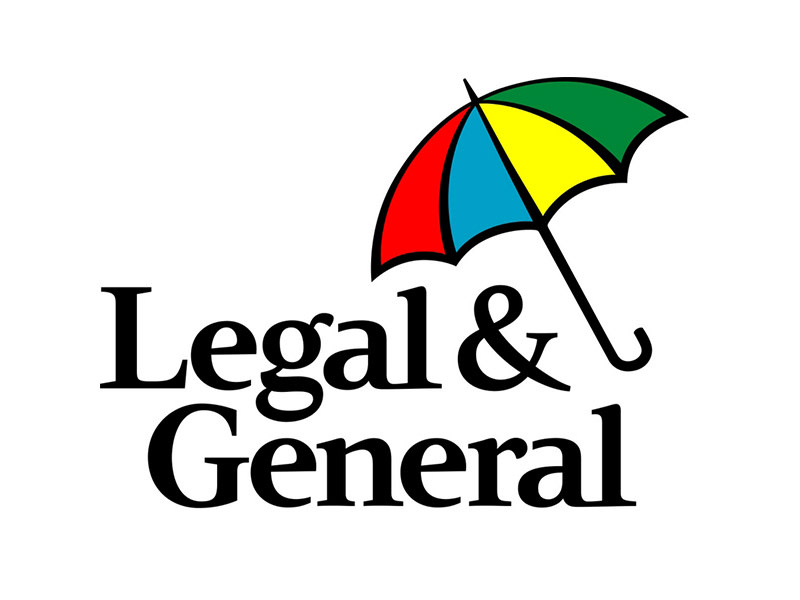Legal & General is one of the UK’s leading providers of passive funds
This fund provides exposure to global high yield bonds with a responsible tilt
It’s a simple, low-cost way to track the J.P. Morgan ESG Global High Yield Corporate Index
This fund doesn’t feature on our Wealth Shortlist of funds chosen by our analysts for their long-term performance potential
How it fits in a portfolio
The Legal & General ESG Global High Yield Bond Index fund provides broad exposure to the global high yield bond market, while being mindful of environmental, social and governance (ESG) issues.
High yield bonds are deemed to be less likely to pay off their debts compared to investment grade bonds and therefore have lower credit ratings. This makes them a higher risk investment. They usually offer a higher yield than investment grade bonds to compensate investors for this added risk.
An index tracker fund is one of the simplest ways to invest and this fund could be a low-cost way to add high yield bonds to an investment portfolio in a responsible way. It could also help diversify a portfolio focused on other assets, such as shares, or other types of bonds.
Funds that just invest in high yield bonds should only form a small part of a well-diversified portfolio, as they are a more specialist part of the bond market.
Manager
Legal & General has run index tracker funds for over 30 years and is one of the largest providers of index funds in the UK. That means it’s got the resources and expertise to track indices as closely as possible, and the scale to keep charges low.
Each fixed income index fund at Legal & General has a primary and secondary manager, though in practice the whole team helps to manage each fund. Steven Grieve is the primary manager responsible for this fund. Grieve joined Legal & General in 2022 from Allianz Global Investors where he was an Associate Portfolio Manager. Lee Collins is the secondary manager and Head of the Fixed Income Index team. Collins was a Portfolio Manager at State Street before joining Legal & General in 2010.
Process
This fund aims to track the performance of the J.P. Morgan ESG Global High Yield Corporate Index, which is made up of roughly 1,250 bonds. The fund currently invests in around a third of the number of bonds in the benchmark. This is known as partial replication, which helps to keep costs down but should still allow the fund to track the index closely.
The fund invests in high yield bonds issued in US Dollar, Euro and Sterling and by companies in developed and higher risk emerging markets. Unlike many bond funds, this one doesn’t hedge the currency risk associated with these bonds. This means that changes in currency exchange rates will impact the returns and could lead to large performance swings over the short term. Just over half of the fund is invested in the US, with the rest spread across countries like the UK, Italy, Canada and Brazil.
The fund currently has a bias towards the consumer, basic industries and energy sectors which made up 18.3%, 9.3% and 9.3% of the fund respectively at the end of March.
The fund excludes bond issuers that earn revenue from the extraction and power generation of thermal coal, tobacco production, weapons and the extraction of oil sands. It also won’t invest in issuers that aren’t compliant with UN Global Compact principles (a UN pact on human rights, labour, the environment and anti-corruption) and excludes issuers with the lowest ESG scores.
The index applies an ESG score to each bond issuer based on a variety of ESG criteria. The fund invests more in issuers with higher ESG scores and less in issuers with lower ESG scores. The index increases the ESG scores of green bonds, which are debt issued by companies to finance projects that have clearly defined environmental benefits.
In any index tracker fund, costs drag on performance and higher costs can lead to a bigger tracking difference between the fund and its benchmark. Legal & General use different strategies to keep costs as low as possible. For example, they try to reduce trading within the fund as it drives up costs.
Some high yield bonds can be more difficult or costly to buy and sell compared to investment grade bonds. When a bond’s credit rating is downgraded so that it transitions from investment grade to high yield, the team may avoid trading close to a rating change to manage this. They can also cross trade bonds internally with other Legal & General funds, which helps to reduce costs.
Legal & General is a conservative tracker fund manager. They don't lend investments in their fixed income index funds like some other companies do. The team has the flexibility to use derivatives though, which adds risk.
Please note as this is an offshore fund you are not normally entitled to compensation through the UK Financial Services Compensation Scheme.
Culture
Legal & General has developed its passive fund range over the last three decades. The company manages around £500bn in tracker funds, allowing it to offer a wide range of index-tracking options.
It’s built a team of experienced passive fund specialists and they’re innovative too. If an index doesn’t exist for a sector they’d like to track, they’ll often work with index providers to create a suitable index for them to track.
The team managing this fund work closely with various risk departments across the business. We believe this provides support and adds challenge where appropriate.
Employees are also encouraged to participate in Legal & General’s share save scheme which should encourage them to be more engaged with the growth of the company. In addition, a portion of fund managers’ bonuses are invested into the funds they manage. By doing this, their interests are further aligned with the investors in the fund.
ESG Integration
Legal & General Investment Management (LGIM) is predominantly a passive investor, but we are impressed with the extent to which they have woven Environmental, Social and Governance (ESG) into their culture. Being a mostly passive fund house hasn’t stopped them being innovative when it comes to ESG. In May 2019, the firm launched its ‘Future World’ range of funds, though this fund isn’t part of that range.
The Future World funds track indices that increase investments in companies that score well on a variety of ESG criteria – from the level of carbon emissions generated, to the number of women on the board and the quality of disclosure on executive pay. They also reduce exposure to companies that score poorly on these measures. The funds also adopt a decarbonisation pathway. This means they’re managed to achieve at least a 7% reduction in carbon emissions per year until 2050.
In 2019, LGIM established its Global Research and Engagement Platform, which brings together representatives from the investment and stewardship teams, in order to unify their engagement efforts. Engagement is conducted in line with the firm’s comprehensive engagement policy. A detailed description of the firm’s engagement and voting activity (including case studies) is available in its annual Active Ownership report. Quarterly Engagement reports are also available.
LGIM’s Stewardship team is responsible for exercising voting rights globally, both for LGIM’s active and index funds. Voting decisions are publicly available through a tool which allows a user to search for any company to find out how LGIM voted, and a detailed rationale is provided for votes against management and abstentions.
The Legal & General ESG Global High Yield Bond Index fund tracks an ESG index which excludes bond issuers from certain sectors and weights issuers based on their ESG score.
Cost
The fund has an ongoing annual fund charge of 0.23%. Our platform charge of up to 0.45% per annum also applies, except in the HL Junior ISA, where no platform fee applies.
Please note that charges are taken from capital. This can increase the income paid by the fund, but it might reduce the potential for capital growth.
Performance
Since the fund launched in May 2023, it’s tracked the J.P. Morgan ESG Global High Yield Corporate Index well. As expected of index funds, it’s fallen behind the benchmark because of the costs involved in running the fund. However, the management tools used by the team have helped to keep performance tight to the index.
It’s been a volatile year for bond markets. There was a strong rally in bonds at the end of 2023 led by the expectation that interest rate cuts were on the horizon. But bonds sold off in the first half of 2024 as most major central banks held off on lowering rates.
Bond yields move in the opposite direction to prices. Usually, when interest rates are cut, bond yields fall, and prices rise. But in 2024 yields fell in anticipation of rate cuts and then rose when cuts didn’t come.
The European Central Bank was among the first to lower interest rates in June, followed by the Bank of England in August. There was a big rise in the price of high yield bonds when the US Federal Reserve cut rates in September for the first time in four years and with a bigger cut compared to most other major central banks.
Even though central banks have continued to lower rates, bond yields have risen, and prices have fallen. This is partly because inflation remains above target and Trump’s tariffs have the potential to push inflation higher.
High yield bonds are usually issued with a shorter time until maturity, which means they are less sensitive to changes in interest rates. This has benefitted the performance of high yield bonds in recent years. Over the last 12 months, the fund has gained 5.18%*. Remember, past performance isn’t a guide to the future.
The prices and income of global bonds can go up and down with foreign currency movements, adding currency risk and volatility for UK investors. As most of the bonds in this fund are issued in dollars and euros, movements in the exchange rates of these currencies will impact the fund’s performance.
The fund has a relatively short track record, but Legal & General’s team has a longer one managing a range of other tracker funds. Their size, experience and expertise running index tracker funds gives us confidence the fund will track its index closely over the long term, although there are no guarantees.
Annual percentage growth
Mar 20 – Mar 21 | Mar 21 – Mar 22 | Mar 22 – Mar 23 | Mar 23 – Mar 24 | Mar 24 – Mar 25 | |
|---|---|---|---|---|---|
Legal & General ESG Global High Yield Bond Index | N/A**% | N/A**% | N/A**% | N/A**% | 5.18% |
**N/A = performance data for this period is not available due to when the fund was launched.


